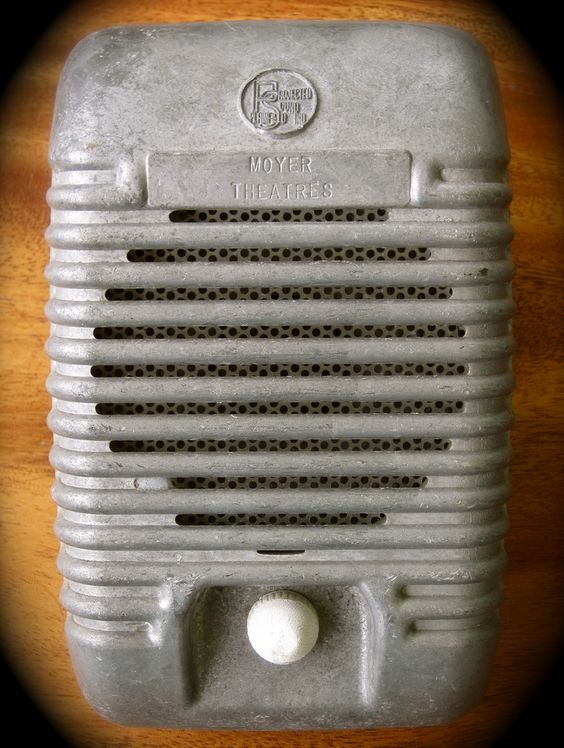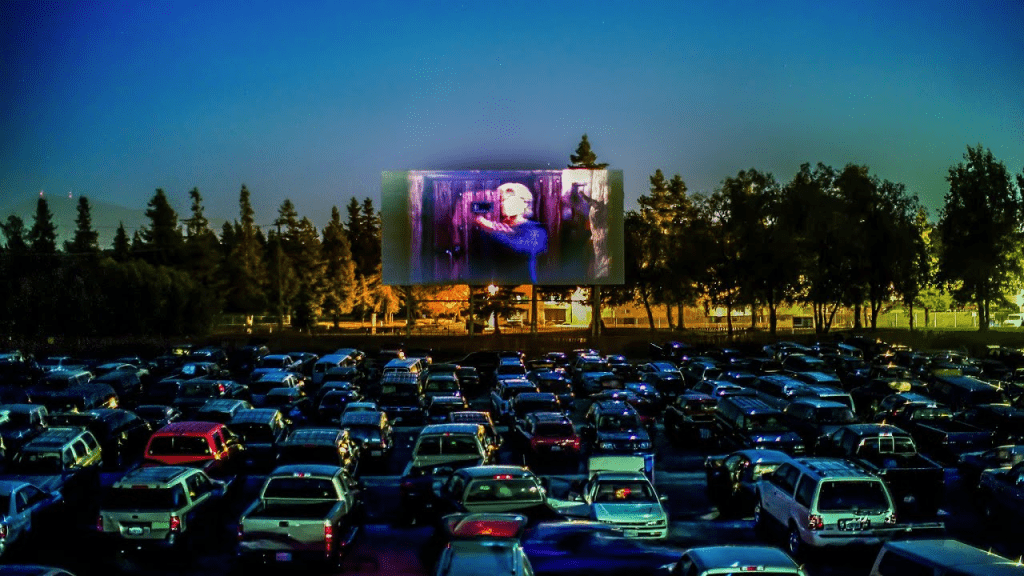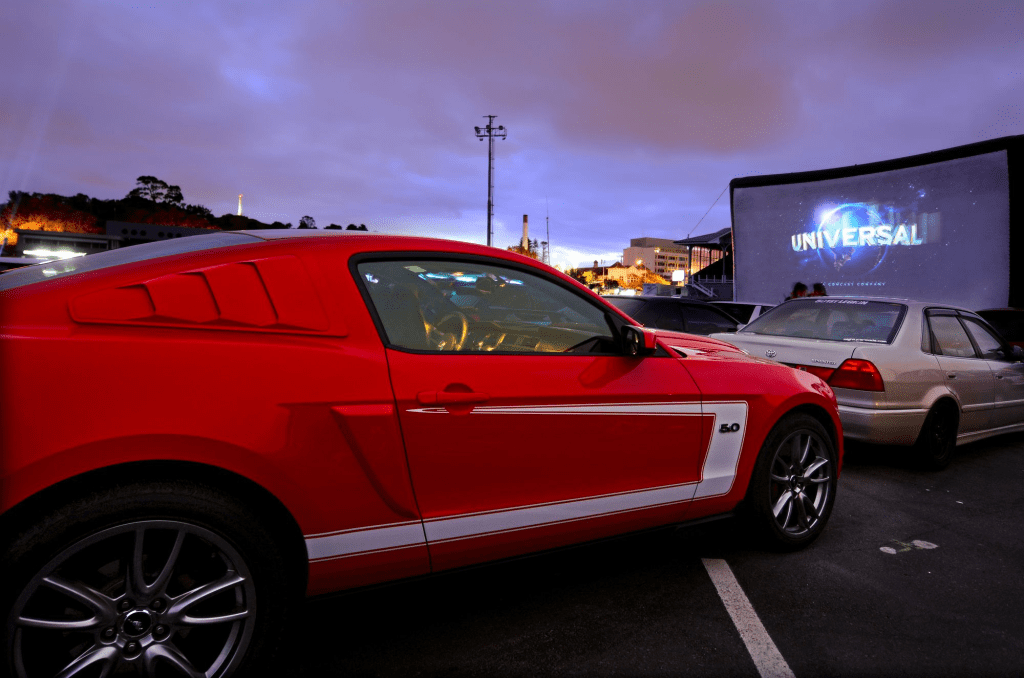Many of us have heard stories from our parents or grandparents about the classic drive-in theater experience—snacking on popcorn while watching a movie from the comfort of a car under the night sky. But how did this nostalgic pastime start, and where does it stand today? Let’s take a journey back to the beginnings of drive-in theaters, explore their rise and fall, and see what’s left of this cherished piece of Americana today.
The Origins of Drive-In Movie Theaters

Believe it or not, the idea of drive-in theaters dates back to the early 1900s. While a few experimental outdoor screenings were held in the 1910s, the first patented drive-in theater was opened on June 6, 1933, by Richard Hollingshead in Camden, New Jersey. The inspiration? Hollingshead wanted to create a movie experience that allowed people to enjoy films in a comfortable setting, especially for those who found theater seats too cramped. He set up a mini drive-in in his backyard, tested different angles for optimal screen viewing, and eventually filed for a patent.
Hollingshead’s original drive-in had a unique selling point: “The whole family is welcome, regardless of how noisy the children are.” This family-friendly approach struck a chord with the public and quickly became the cornerstone of his marketing strategy. Families flocked to his drive-in for the chance to enjoy a movie in a relaxed, outdoor setting, and the idea quickly spread across the United States.
The Golden Age of Drive-In Theaters: 1950s and 1960s
After Hollingshead’s first theater paved the way, drive-ins began popping up all over the country. By the 1950s, drive-in theaters had reached their peak, becoming incredibly popular, especially among Baby Boomers. At their height, there were over 4,000 drive-ins across the U.S., mostly in rural and suburban areas where land was affordable and space was plentiful.
The appeal of drive-ins during this era was multifaceted:
- Family-Friendly Environment: Drive-ins were the perfect setting for families with young children. Parents didn’t have to worry about their kids disturbing other moviegoers.
- Affordable Date Night: Teenagers and young adults loved drive-ins as an inexpensive and romantic date option. They could watch a movie, enjoy a snack, and spend time together without breaking the bank.
- Seasonal Entertainment: Drive-ins typically operated during the warmer months, offering a seasonal activity that families looked forward to each year.
With bright neon signs, massive screens, and large parking lots, drive-ins became a staple of American entertainment. However, as with all trends, the golden age of drive-ins began to fade as new challenges emerged.
Challenges and Decline: The 1970s and Beyond
Drive-in theaters faced numerous obstacles in the 1970s that contributed to their gradual decline. First, the oil crisis caused gas prices to skyrocket, prompting Americans to buy smaller, more fuel-efficient cars. With less space, watching movies in these compact cars became uncomfortable, and drive-ins saw a drop in attendance.
To counter the loss of revenue, many drive-ins started showing more adult-oriented and exploitation films, a move that alienated their family-friendly audience. The rise of the home video market in the 1980s, especially with the popularity of the VCR, also dealt a significant blow to drive-ins. Now, people could rent movies and watch them at home, making it less convenient to head to a drive-in.
Another major challenge was the increasing value of land. As urban and suburban areas expanded, drive-in theaters, which often required 15 or more acres of land, became prime real estate. Many drive-in owners decided to sell their properties to developers, who converted the land into shopping malls, residential complexes, or other commercial developments.
The Drive-In Movie Theater Revival and Today’s Landscape

Although drive-ins lost much of their popularity, they’ve never completely disappeared. In fact, recent years have seen a resurgence of interest, thanks to the nostalgia factor and a renewed focus on unique entertainment experiences. The COVID-19 pandemic further fueled this comeback, as people sought safe ways to enjoy movies while practicing social distancing.
Today, there are around 300 drive-in theaters still in operation across the United States, each offering its own twist on the classic experience. Many have modernized with digital projectors, FM radio transmitters for audio, and food trucks for an updated concession stand feel. Some drive-ins even feature playgrounds, picnic areas, and double features to cater to families looking for a night out.
If you’re curious about visiting a drive-in, here are a few well-known locations that continue to operate:
Notable Drive-In Theaters Still Operating Today
- Northeast: Warwick Drive-In, New York; Shankweiler’s Drive-In, Pennsylvania; Wellfleet Drive-In, Massachusetts.
- Southeast: Starlight Drive-In, Georgia; Raleigh Road Outdoor Theatre, North Carolina; Silver Moon Drive-In, Florida.
- Midwest: Harvest Moon Drive-In, Illinois; Field of Dreams Drive-In, Ohio; Capri Drive-In, Michigan.
- Southwest: Coyote Drive-In, Texas; Admiral Twin Drive-In, Oklahoma.
- West: West Wind Las Vegas Drive-In, Nevada; South Bay Drive-In, California; Blue Fox Drive-In, Washington.
Why Drive-Ins Remain Cultural Icons

Despite the challenges and the decrease in numbers, drive-in theaters continue to hold a special place in American culture. They represent a simpler time, a slower pace, and a chance to enjoy movies in a communal, family-friendly environment. Drive-ins evoke nostalgia, and for many, they’re a reminder of childhood memories, family outings, and romantic dates.
The drive-in experience goes beyond watching a movie; it’s about spending time with loved ones, enjoying snacks under the stars, and being part of a shared experience. Even as technology and entertainment habits evolve, the charm of the drive-in endures, giving each new generation a taste of this beloved slice of Americana.
Conclusion: A Timeless Experience
Whether you’re a fan of classic films or the latest blockbusters, a trip to the drive-in offers a unique experience that can’t be replicated by streaming services or modern cinemas. The nostalgia, community feel, and laid-back atmosphere make drive-ins a beloved tradition that’s likely to endure in some form for years to come.
So, the next time you’re planning a movie night, consider heading to your local drive-in. You’ll not only get to watch a great film, but you’ll also become part of a tradition that has spanned decades and continues to hold a special place in the hearts of movie lovers everywhere.